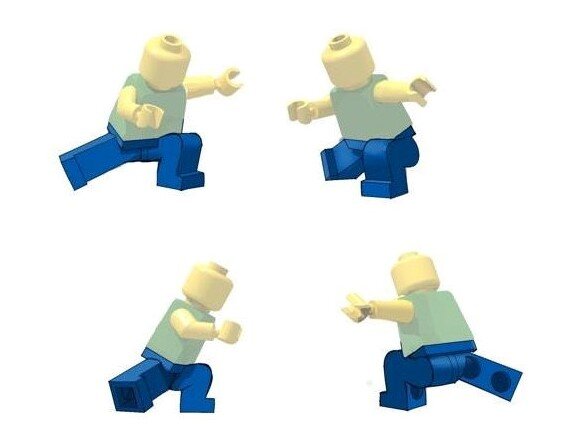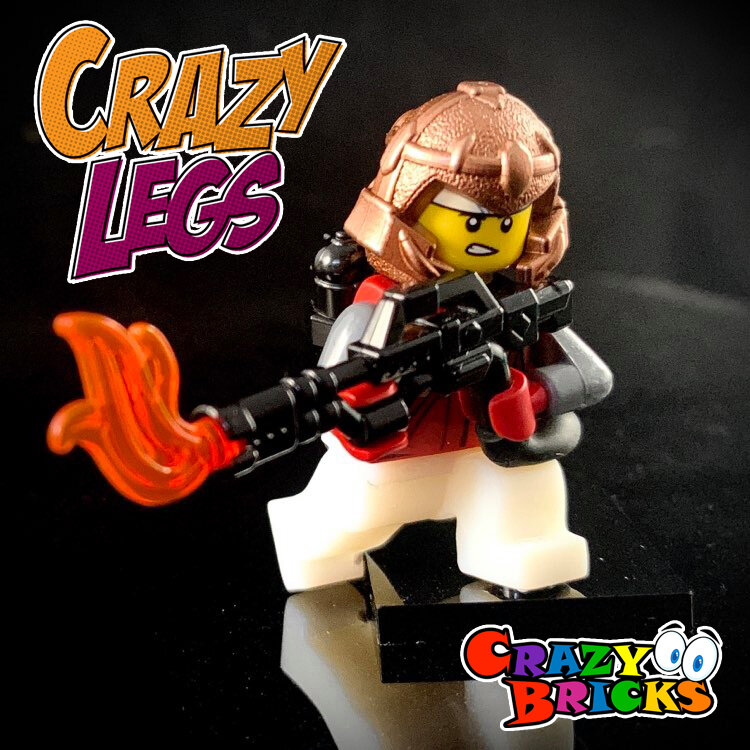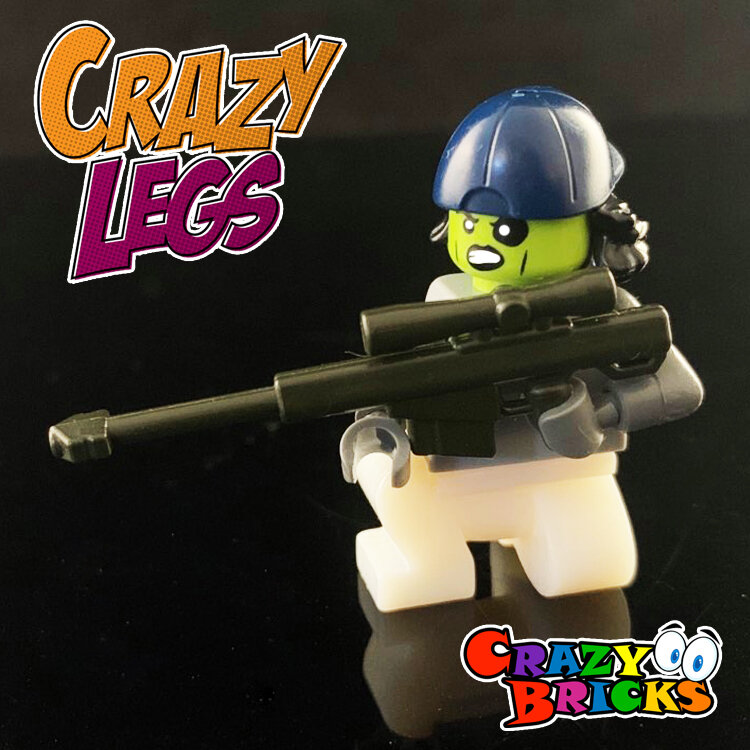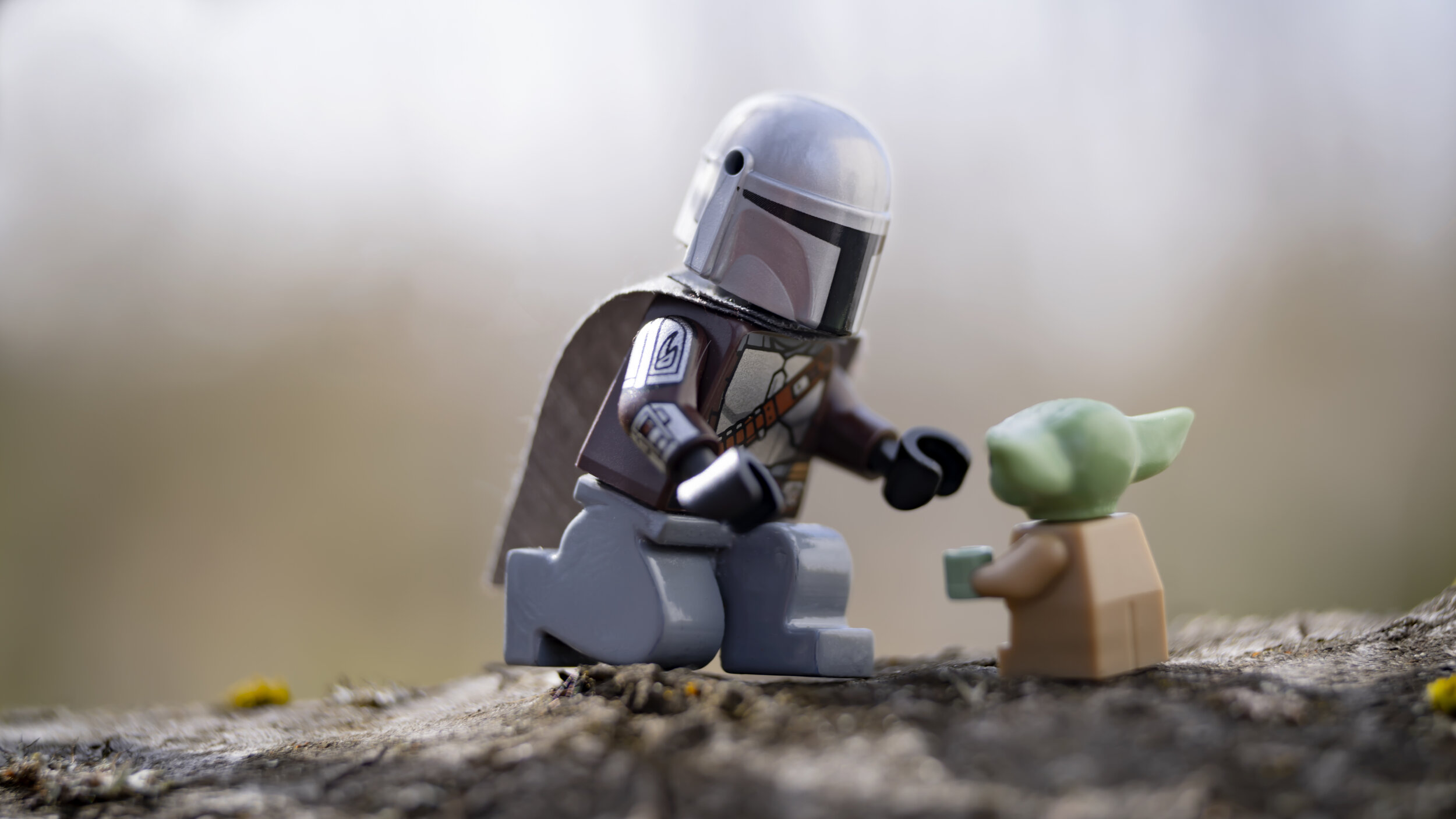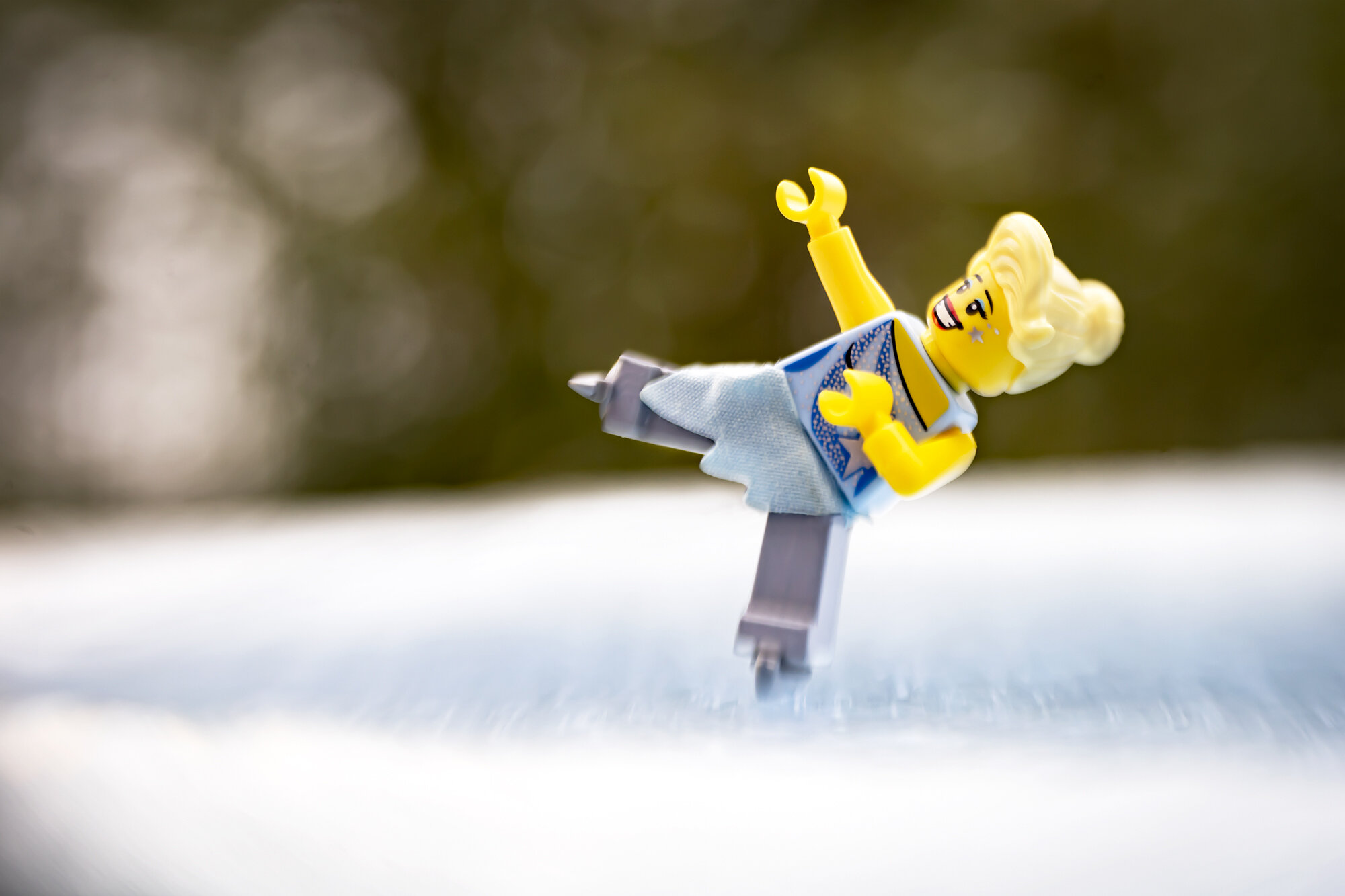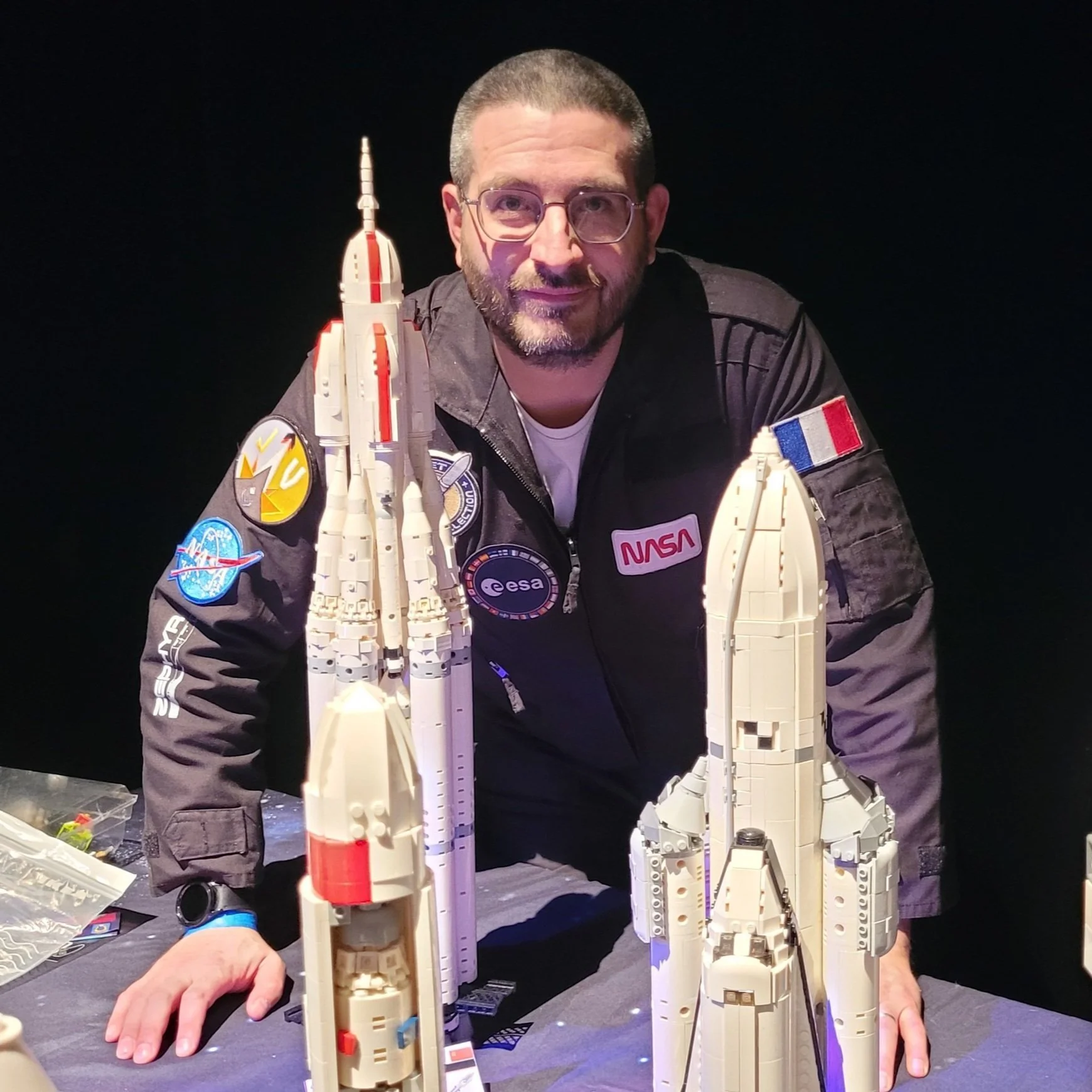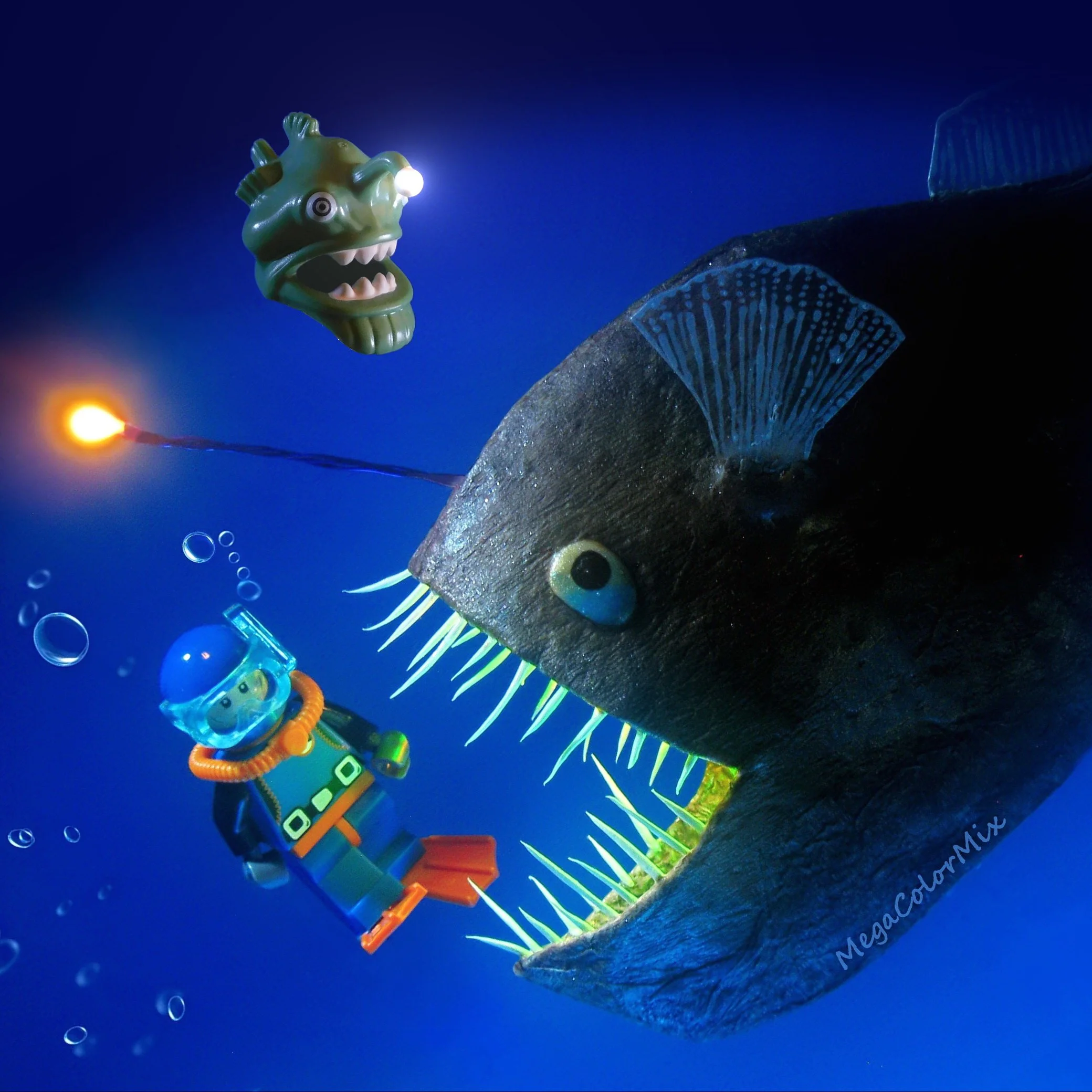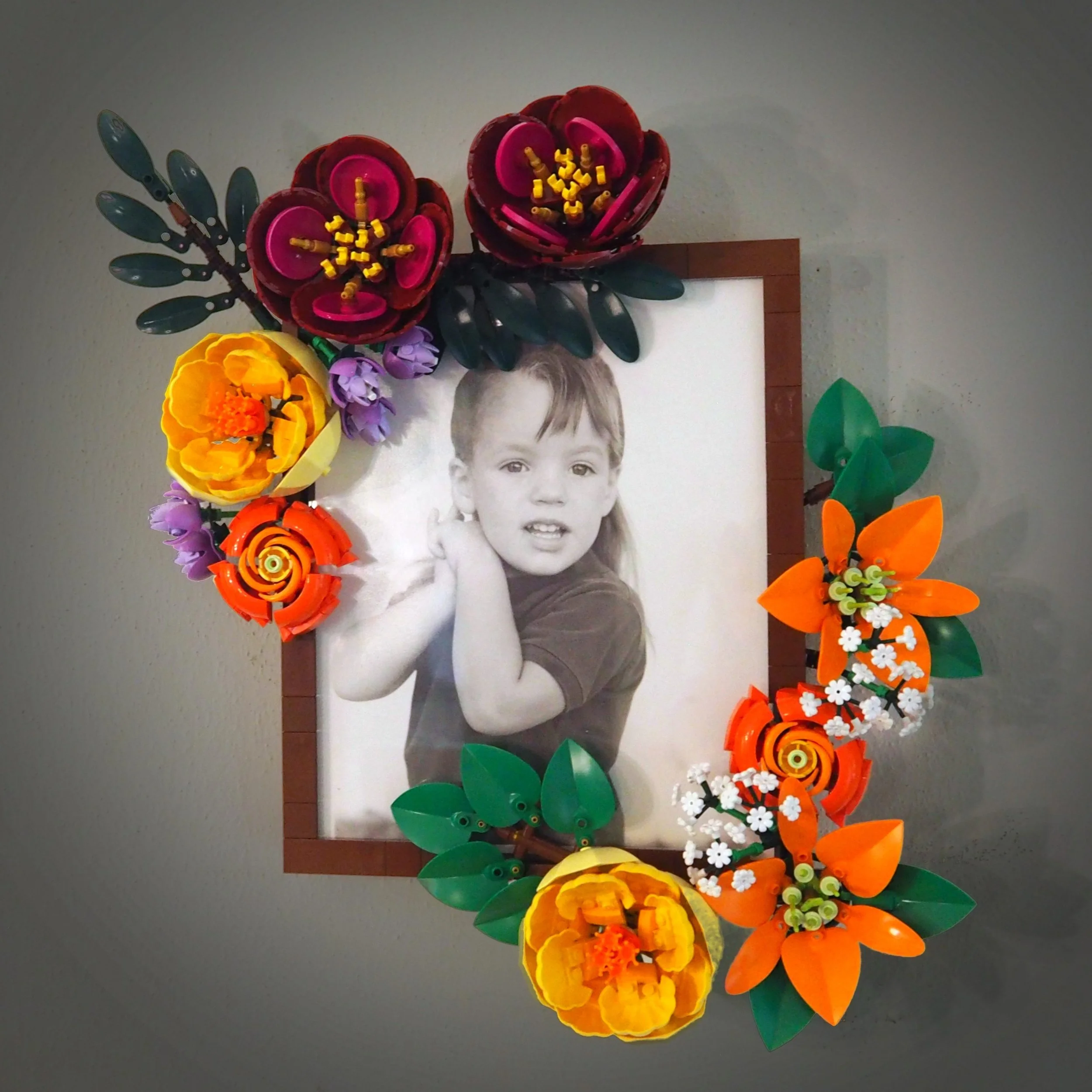Breaking the Mold: Crazy Legs Kickstarts into High Gear
/The LEGO community has always pushed the limits of the LEGO minifigure when it comes to dynamic poses. But Guy Himber from Crazy Bricks has always looked to “break the mold” and grant new flexibility to customizers and LEGO fans alike. We chatted with Guy at length about his newest Kickstarter project “Crazy Legs” and how they might impact the fan community.
Dave: Hi Guy, thanks for getting nerdy with us again! You seem to always have an idea for something new for the LEGO community. When did you have the idea for Crazy Legs and how long has it taken to prepare?
Guy: Crazy Legs was an idea that very very first started back when I did the earliest incarnation of Crazy Arms. The arms came first because I think they had to lay the groundwork and hobby acceptance that would allow Crazy Legs to happen as the next logical step in challenging the status quo for minifigures and the customization thereof. I really started to pursue the leg idea with gusto last year while Covid had everyone on lockdown and trapped by their computer screens all day.
Dave: Crazy Arms certainly led to builders being able to pose minifigures in a much more natural way. In some ways, LEGO minifigure legs are even more limiting than the arms. How did you first approach creating Crazy Legs?
Guy: As a designer, I am driven by a constant desire to create action, movement and energy that the limits of a LEGO minifigure certainly do not allow. When I make MOCs, my figures want to do more than just patiently stand about like rigid Guards at Buckingham Palace, they need to be full of life and expression and emotion. Freed from their little plastic chains they need to stretch their arms and legs and better express their little plastic selves!
Some clumsy attempts at positioned minifigure legs have been attempted in the past and they have always felt very clunky and unsatisfying to me. I have always wanted to design legs as accessories that could do more. My first example of this desire for more “leg flow” was the creation of digitigrade legs that I produced in a mold set around the time that the first Crazy Arms were produced.
For those not in the know, digitigrade is the term for your favorite dog’s legs. Think werewolves and satyrs and demon goats. I was really happy with the resulting “digi-legs” and many creative builders and customizers became quick fans of this new approach to legs.
Dave: When we chatted about Dino Dudes, we learned that you start designing with sketches. Was that the case with Crazy Legs?
Guy: My experience has taught me that all the best ideas start with strong 2D design and exploration Upwards of over a dozen different poses were explored and critiqued to arrive at my most favorite eight poses. These eight were later refined to the final six that make up the Kickstarter items: Sniper, Step Up, High Kick, Super Landing, Flight, and Kneeling.
Dave: How did you brainstorm and then decide on the final poses?
Guy: I have a cabal of trusted eyeballs (fellow designers, builders and photographers) that I like to share the various ideas and concept art with. These discerning eyes would either give me feedback that matched my own ideas or make me question the direction I was taking with a particular pose (and more often than not, propose a new idea or perspective on a potential leg position that I hadn’t thought of).
Dave: Once you decided on the poses, how do you take those designs from paper to production? I assume 3D models are necessary to create molds?
Guy: Focusing on the initial eight 2D poses, I developed the “language” of what the legs might look like when expressed as real-world concepts. The digital sculptures went through numerous revisions as we received feedback on the various poses. Establishing the language of the poses was harder than you might think because many of the 2D concept drawings didn’t reveal the problems that creating the 3D models often reveals. The sculpting got easier and moved along faster once we had the initial feel down. The first two leg models took three or four iterations each to get right.
Dave: After you have a 3D model, I assume you then go to some sort of rapid prototype like 3D printing? How does it feel to get your hands on one of your ideas for the first time?
Guy: The happiest of days is when the first prototypes are made and plugged into a minifigure! It is a magical process of resin, ultraviolet light and time that results in the creation of lovely (yet brittle) prototype parts to play with. These prototype pieces are one of the most important parts of our process because we want to make sure that the designs remain compatible with the Crazy Arms and figures so builders can go “Double Crazy” if they want to in their ulitmate minifigure poses.
Dave: What is the craziest Crazy Arms/Crazy Legs position you can think of?
Guy: All the leg positions look weird at first—ALL of them. We are used to the odd proportions of the minifigure, but when you really analyze them from a designer’s perspective and with a critical eye, the shape size and proportions are super confusing and odd. This strangeness is also why people have come to love and accept the unique minifig style though.
Dave: Once the 3D models are finalized, is it as simple as machining a mold next, or is it more complicated?
Guy: As familiar and sensible as the Crazy Legs pieces appear, they are actually immensely complicated and “unfriendly” parts to create injection molds for. They are designed with aesthetics FIRST and ease of manufacturing SECOND. Injection molds for these parts are deceptively elaborate and expensive investments. Almost everything about the shapes and designs are done in a manner to make them less and less mold-friendly.
But that difficulty is part of what makes them magic. They are over-complicated and out-of-the-box from many perspectives, hence their unique and limit-breaking nature. I don’t think a standard manufacturer would consider making these parts in that they violate most of the standard rules of part design for fabrication ease. They are “crazy” in many ways… see what I did there?
Dave: Why are these molds particularly unfriendly to injection molding? What makes them that way?
Guy: When designing parts for injection-mold tooling you have a number of things that guide your design decisions. Can we make this part out of a simple two-part mold setup? If not, can we do it with minimal slides and moveable parts? Can we keep the part design along simple parting lines? Can we keep the “walls” of the part consistent in thickness to minimize shrinkage issues? Can we optimize the part to maintain “clutch-fit” where needed?
All of these considerations must come into play so that the mold cost is in line with the expected profitability of the parts you are creating. The Crazy Legs are developed with little of these considerations in mind. So, there are a myriad of “bad choices” built into the part from an injection mold perspective, but EXCELLENT choices from an aesthetics perspective. We could spend 20 paragraphs just going into the particulars but trust me, the mold engineering team is not happy with Crazy Legs!
Dave: What was a pose you loved but had to cut due for some reason like manufacturing capability?
Guy: Due to the complex and mold-unfriendly nature of the Crazy Legs designs, we knew the max amount of legs we could fit in a single mold set would potentially be six parts. So, at minimum, we will do a three-part mold for the Kickstarter project (though we’ll do more if there is demand—six is the most we can fit). One of the poses that broke my heart to lose was the sitting cross-legged pose. Imagine Dr. Strange sitting in the Sanctum Santorum type of stuff—one day!
Dave: I assume that creating the molds is the most expensive part of the design process?
Guy: Yep! These are VERY expensive injection molds and we will start immediately upon the conclusion of the Kickstarter campaign if it is successful. We already have a number of customizers eager to do some special things with these new leg designs and we don’t want to keep them or our Kickstarter supporters waiting any longer than they have to. Our mold engineers have already seen the high engineering demands of these complex parts and they are prepared to take on the challenges.
Dave: Do the legs move at the hips at all or are they static poses from a single mold? Did you consider making leg elements that you could connect to minifigure hips?
Guy: To make the legs poseable interchangeable would actually triple the expense of producing them. When we look at a standard set of LEGO legs we are actually looking at three parts with three different mold cavities, plus the cost of post-manufacture assembly. This does make for some great legs but the cost to benefit ratio isn't attractive enough for the level of creativity I wanted to create.
In addition, everyone has a preconceived notion of the value of the existing LEGO legs. We are all used to getting them cheap and easy which is only enabled because Team LEGO can amortize the molding and assembly costs across millions of legs. At Crazy Bricks, we are creating more specialized designs that are intended for the top-tier builders and MOC customizers, hence our cost per part is much greater. Making the legs posable would just limit the number of poses we could offer and ultimately not really increase the value enough to justify the extra engineering and manufacturing costs.
Dave: Are the legs able to be connected to studs when posed or do you have to balance them somehow?
Guy: It varies from pose to pose. Some legs have multiple connection points for multiple options (the Hero Landing pose for example) and some are better suited towards gravity doing the heavy lifting (the Flight pose). We tried not to limit folks too much with preconceived notions as to how the legs have to be used. Many of our photography pals are doing tricky things with quake putty and popsicle sticks already, so they are used to taking existing LEGO legs and oftentimes disassembling and repurposing their figs to achieve interesting results already.
Dave: The photography of your recent Kickstarter campaigns has been phenomenal. What’s your secret?
Guy: I enlisted the impressive talents of our frequent collaborators Shelly Corbett Photography and Astrid from hey.light who got to be the first creative folks to get to play with the prototype pieces. In their capable hands and under the focus of their talented eyes, the Crazy Legs really started to show the potential they unlock for collectors and MOC makers. I won’t say too much more about how awesome these two talented photographers are—the images speak for themselves.
Dave: Aside from photos, you also have a video showing full rotations of the legs which is new for your projects. How was that process?
Guy: We wanted to create a video designed to show off every angle and make folks get their adrenaline flowing! It is short on details and high on excitement and MoJo baby! I felt that the spinning, music and movement was the best way to create the “feeling” of Crazy Legs. You can write “emotion” but it doesn’t have the same impact as a strong visual experience that creates the feelings and enticement of a good video. Sure, you can get all the details by exploring the Kickstarter project, but I thought it was most important to capture the sense of possibilities in the video.
Dave: You’ve had a lot of success using Kickstarter as a platform. How will Crazy Legs be positioned and will there be any fun perks?
Guy: We are SO EXCITED to bring these new ideas to life! We will offer an initial three-pack of the poses (Sniper, Step Up and High Kick) with the opportunity to unlock the second three-pack of poses (Super Landing, Flight and Kneeling) if we are successful enough. Each set of three poses in a pack will be the same color. So if you like red pants, you will get three sets of legs in red in the appropriate poses for that particular set. Hopefully, we will unlock the second set of poses AND lot of extra bonus colors! In terms of perks, day one supporters will all get a free set of Javelin-style Crazy Arms! BOOM!
Dave: Why will the legs be sold in color packs vs individually?
Guy: Good question! Managing assorted parts gets exponentially more complicated and unmanageable really quickly. For example, let’s say we offer “Product Z” in 10 colors and six different models. In effect, that is now 60 DIFFERENT items to separately manage for one project! The paperwork and fulfillment and shelf space gets ugly real fast. By contrast, if we offer “Product Z” in 10 colors but in two different 3-packs, we now only have a pleasant and time-saving 20 products to wrangle. Additionally, the value per product is now perceivably much higher and more useful.
Dave: How do you determine the goals for Kickstarter? Do the funds recoup your efforts or pay for future manufacturing needs?
Guy: At a minimum, the goal of our Kickstarter project is to pay for the cost of the mold. As long as we cover this cost in our net return we consider the project a success. We have a simple spreadsheet system that we use to figure out our costs vs. what we need to raise to make the project a viable one. Anything beyond that initial funding represents potential profit or capital to upgrade and reinvest into the project or give back to the pledges in the form of extra bonus goodies to thank them for their support.
Dave: What colors do you expect will most popular and why?
Guy: What we learned from Crazy Arms is that the military colors (dark gray, dark tan, light tan) are always popular and then there is a second-tier of colors (white and black for example) that are commonly popular in use. However, there is always that ONE person that says, “Hey, can you make those arms in light sand violet-green? All my friends really need those for our Dungeons and Dragons magic-user goblins!” But typically, these are very low appeal colors beyond those first 20 people that really really want them. To make things worthwhile and keep the price point happy we always do the most popular colors first and reserve the funky colors for specific projects in the future. Now having said that,if you really want some “light sand violet-green”-colored arms, and price is no issue, we can make them for you!
Dave: Do you personally support any other Kickstarters or creators that you can recommend?
Guy: I typically support exceptional games on Kickstarter, clever creative projects (check out our friends at SteamCrow) or industrial design projects that are fun but probably not truly needed beyond the expression of some clever engineering and thinking. (i.e. a pen that turns into a fishing pole!? TAKE MY MONEY!) I believe we all must always support artists and creative folks. This is where the human spirit gets its batteries charged. This is where changes and innovations begin.
Dave: What has the initial reaction to Crazy Legs been? Are traditional fans or customizers more excited?
Guy: Oh boy! What is the term? “Chomping at the bit”? Well, lots of bits are getting chomped! The folks that have the Tiger’s Eye all see the potential waiting to be unleashed when the legs hit our community of builders. And this is what I love the most. Giving creative and inventive folks new tools and undiscovered countries to explore.
Dave: What effect do you think Crazy Legs will have on the LEGO community?
Guy: Crazy Arms took a long but steady climb to be accepted. The arms had a loyal and immediate following from a select group of builders and then slowly and steadily grew in popularity. In effect, we are CONSTANTLY reintroducing new folks to the wonders of Crazy Arms as they are newly discovered by an ever-growing number of builders. I have lost count of how many times folks have stared in wonderment at the posed arms and say “How in the heck did you do that!?” I would imagine the same things will occur with Crazy Legs as folks keep rediscovering them too.
Dave: Thank you so much for your time! Any last thoughts on Crazy Legs that you would like to share?
Guy: Crazy Legs are an idea many years in the making and everyone at Crazy Bricks think they represent some next-level creativity for the future of custom minifigures. We are really looking forward to seeing what the community will create and discover with them once they hit everyone’s collections!
What do you think of Crazy Legs? How would you use them in your LEGO displays? Leave your thoughts in the comments below.
Do you want to help BrickNerd continue publishing quality articles like this one? Become a patron to show your support, get early access, exclusive swag and more.



